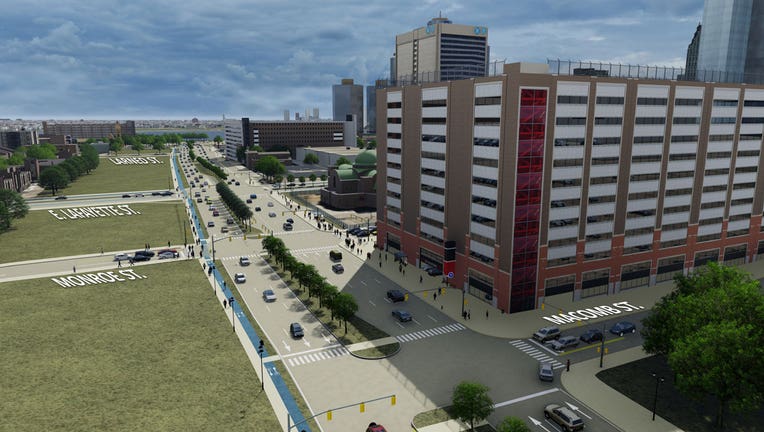Detroit council members, citizens voice opposition to proposed I-375 boulevard

Rendering of boulevard that would replace I-375.
DETROIT (FOX 2) - Discontent and worry over the proposed I-375 removal reached the Detroit City Council Tuesday with at least two representatives voicing opposition to the remodel, which would convert the mile-long freeway into a boulevard.
Council members Angela Whitfield-Calloway and Mary Waters announced their concerns during a Tuesday presentation with state transportation officials that gave an update on the design and timeline of the massive infrastructure overhaul.
"I can go on the record right now, I do not support a nine-lane freeway," Whitfield-Calloway said. "That's what I'm trying to avoid."
They were reiterating concerns from members of the public who argued the project would accomplish the opposite of the stated goals of connecting neighborhoods to downtown. Instead, it would further divide them, with one commenter saying the proposal "actually creates a bigger barrier between downtown and our neighborhoods."
They spoke after a statement from a former city planner who argued the entire project should be restarted since planning officials had placed the carriage before the horse.
"The community will tell you, and the community basically supports what me as a community planner recommends is that we start over again," said Hilanius Phillips, who referenced a meeting over the weekend between residents of Lafayette Park and planning officials.
"There is no way the planning and development department should be in the position that it is now on this proposal when the people and you guys, our representatives, have not even seen it," he said.
The Michigan Department of Transportation has spent years planning the rebuild of I-375. The goal has been to right historic wrongs after an urban renewal project built the highway and tore up Black-majority neighborhoods Black Bottom and Paradise Valley in the 1950s and 1960s.
The project secured $100 million from the federal government as part of an effort to remove infrastructure that divided cities. But while the massive grant means MDOT can start sooner on the project, many in the community has been dismayed by the initial plans for the site.
Renderings were first revealed during an April meeting at Eastern Market.
The current plan would replace most of I-375 with a six-lane highway with a median in the middle. At one intersection, the boulevard will be nine lanes wide.
On Tuesday, MDOT officials pitched the project as strengthening transportation mobility and roadway safety, improving connectivity, and addressing stormwater management concerns. Construction on the highway is slated to begin in late 2025.
Most of the construction will be from 2026 to 2028.
So far, 30% of the project has been designed, said John Loree, a senior project manager with MDOT, who said the city would be the primary lead in looking at how the land made available by the highway removal project should be used. He also said the project would go beyond just improving transportation.
"It's about providing a lot of new connections, restoring the grid where we can," he said.
The project encompasses reconstructing the I-75 interchange from John R to Mack with the aim of making it easier for residents in neighborhoods to reach downtown. Renderings of the boulevard show walking paths and bike paths next to the road, as well as expanded sidewalks.
The design would also elevate the boulevard while leaving I-75 depressed. The design also includes a new bridge over I-75 that would connect Eastern Market to Brush Park.


